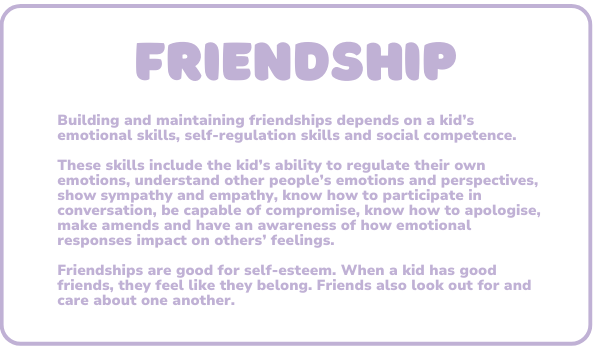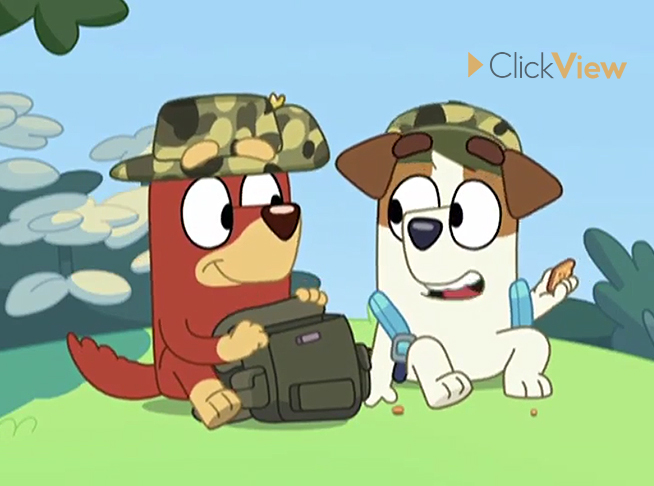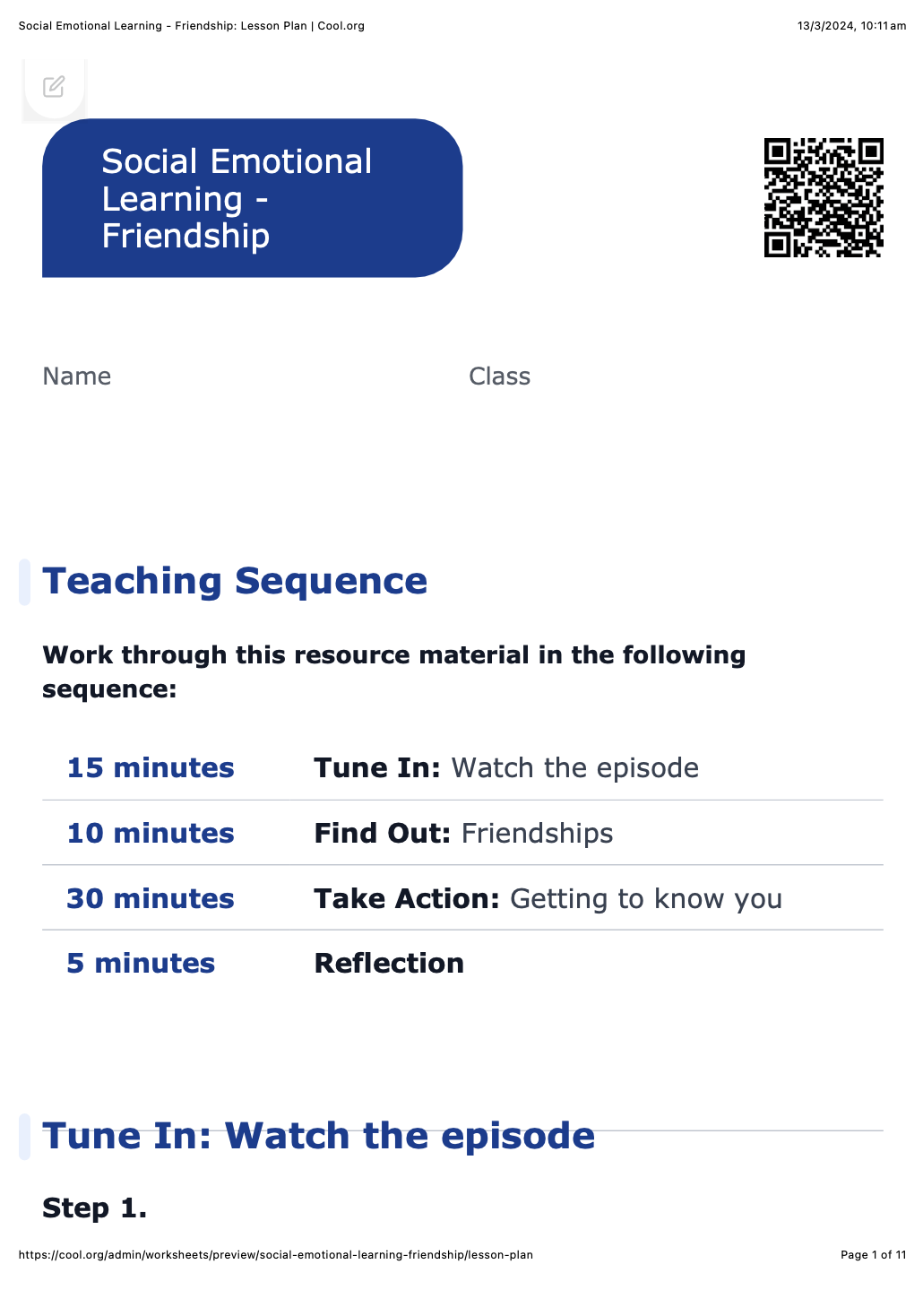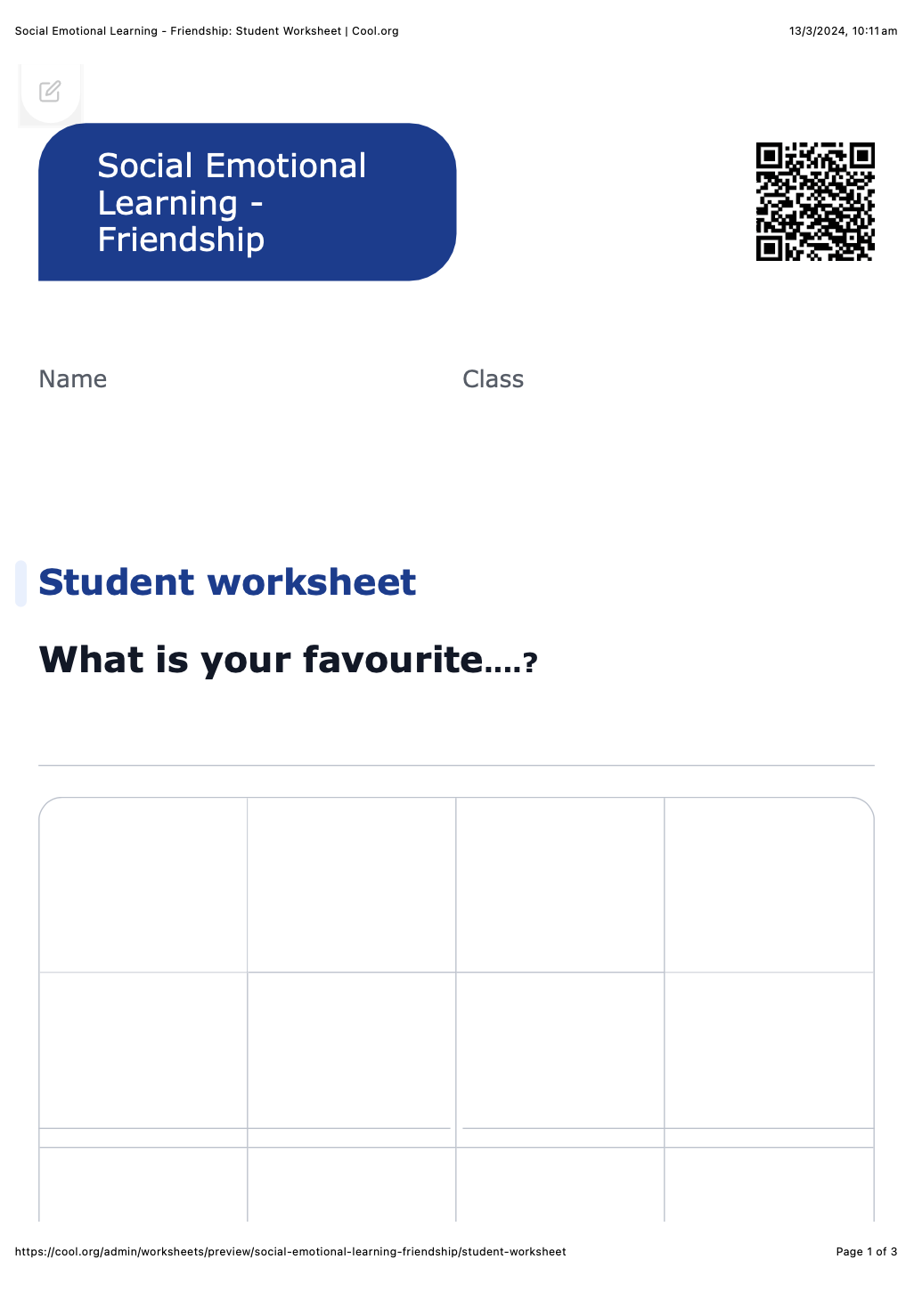Lesson summary
The animated series Bluey serves as a valuable tool in fostering children's development of imagination, curiosity, and social and emotional learning.
This lesson uses intentional teaching strategies to focus on the capability of 'friendship,' beginning with a fun getting-to-know-you game with students and then investigating what makes their friends unique by collecting data via a survey and filling out biography cards for classmates they want to get to know better.
This suite of resources supports emotional and social learning and oral language development through a values framework. Each lesson uses intentional teaching strategies to develop a specific value. This lesson focuses on:

Click here for a full list of the values that underpin these lessons.
This lesson showcases a Bluey episode, which can be viewed on ClickView. Don't have a ClickView subscription? Bluey is also available on ABC iView. For real life!
Learning intentions
Students will:
- identify personal strengths and celebrate the diversity of unique individuals in the classroom
- collect data and present their findings.
Success criteria
Students can...
- nominate unique facts about themselves, including something they're 'great' at
- conduct a survey about their classmate's favourite things
- draw a column graph.
Lesson guides and printables
Curriculum links
Select your curriculum from the options below.
Lesson details
Curriculum Mapping
Australian Curriculum (v9.0) content description:
Foundation Year Health and Physical Education:
- Investigate who they are and the people in their world (AC9HPFP01)
- Practise personal and social skills to interact respectfully with others (AC9HPFP02)
Year 1 & 2 Health and Physical Education:
- describe their personal qualities and those of others, and explain how they contribute to developing identities (AC9HP2P01)
- identify and explore skills and strategies to develop respectful relationships (AC9HP2P02)
Foundation Year Mathematics:
- collect, sort and compare data represented by objects and images in response to given investigative questions that relate to familiar situations (AC9MFST01)
Year 1 Mathematics:
- acquire and record data for categorical variables in various ways including using digital tools, objects, images, drawings, lists, tally marks and symbols (AC9M1ST01)
- represent collected data for a categorical variable using one-to-one displays and digital tools where appropriate; compare the data using frequencies and discuss the finding (AC9M1ST02)
Year 2 Mathematics:
- acquire data for categorical variables through surveys, observation, experiments and using digital tools; sort data into relevant categories and display data using lists and tables (AC9M2ST01)
- create different graphical representations of data using software where appropriate; compare the different representations, identify and describe common and distinctive features in response to questions (AC9M2ST02)
Syllabus outcomes: MAe‑1WM, MAe‑3WM, MAe-17SP, MA1‑1WM, MA1‑3WM, MA1-17SP, COES1.1, IPES1.11, COS1.1, INS1.3, IRS1.11, GDS1.9
General capabilities: Numeracy, Personal and Social Capability
Relevant parts of Foundation Year Health and Physical Education achievement standards: Students can describe similarities and differences between themselves and others, and different emotions people experience. They demonstrate personal and social skills to interact respectfully with others.
Relevant parts of Year 1 – 2 Health and Physical Education achievement standards: Students can explain how personal qualities contribute to identities. They describe how emotional responses affect their own and others' feelings. They demonstrate skills and describe strategies required to develop respectful relationships.
Relevant parts of Foundation Year Mathematics achievement standards: Students collect, sort and compare data in response to questions in familiar contexts.
Relevant parts of Year 1 Mathematics achievement standards: Students can collect and record categorical data, create one-to-one displays, and compare and discuss the data using frequencies.
Relevant parts of Year 2 Mathematics achievement standards: Students can use a range of methods to collect, record, represent and interpret categorical data in response to questions.
Resources Required
- Art supplies – coloured pencils and textas
- Chairs – one per student
- Clipboard (optional) – one per student
- Device capable of presenting a video to the class
- Student Worksheet – one copy per student
- Whiteboard.
Additional Info
This is not an official Bluey lesson. Cool.org does not have an official partnership with Bluey.



Welcome back!
Don't have an account yet?
Log in with:
Create your free Cool.org account.
Many of our resources are free, with an option to upgrade to Cool+ for premium content.
Already have an account?
Sign up with:
By signing up you accept Cool.org's Terms and Conditions(Opens in new tab) and Privacy Policy(Opens in new tab).